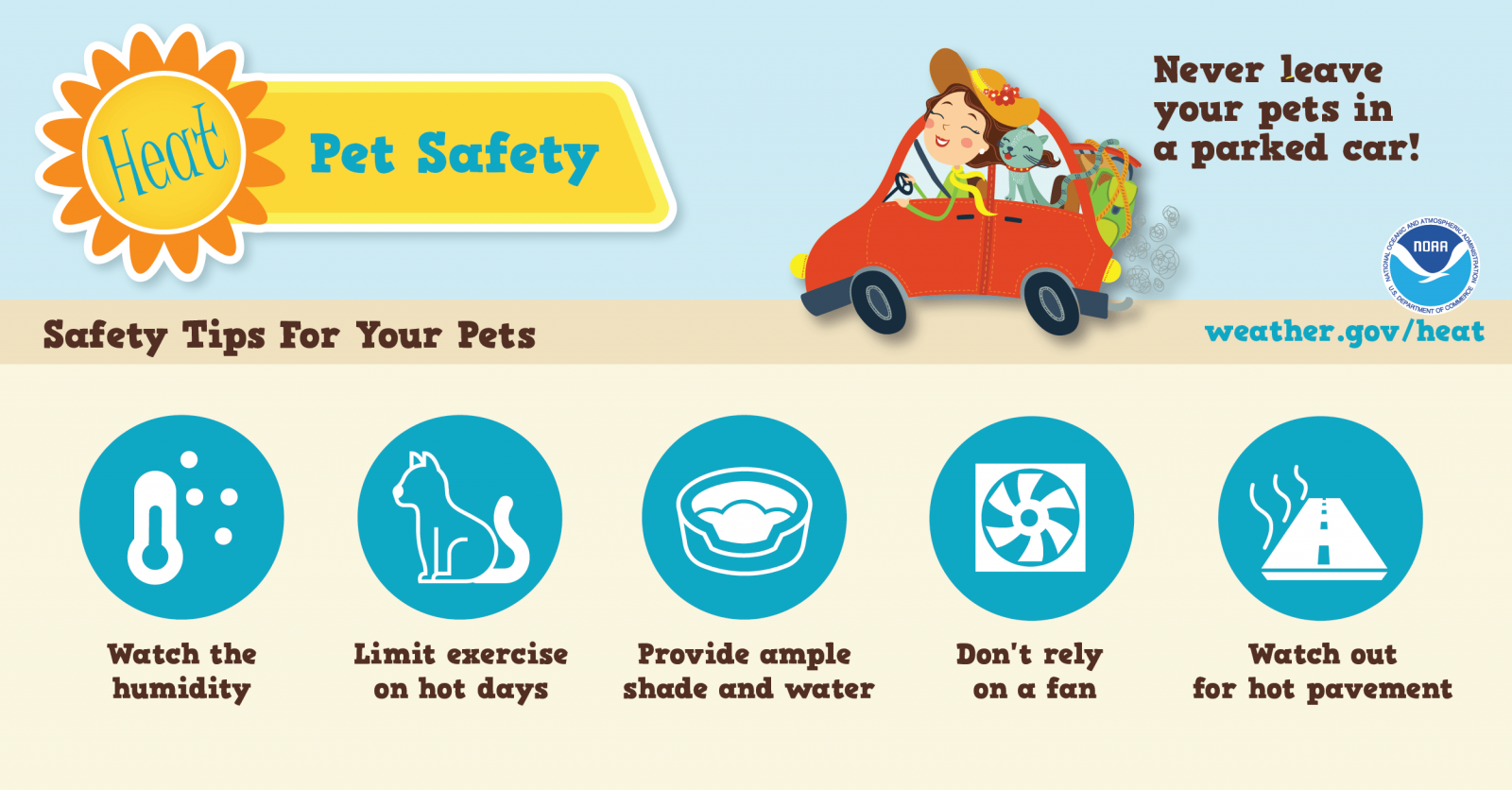
The “dog days of summer” is a phrase used to describe the hot and humid days of summer. It can be traced back thousands of years to the days of the Roman Empire. It refers to the dates from July 03 through August 11, which is 20 days prior and 20 days after the star Sirius rises and falls in conjunction with the sun. Sirius was knows as the “Dog Star”, because it is the brightest star in the constellation Canis Major (Large Dog).
The dangerous heat and humidity of these "dog days" can be harmful to not only humans, but human's best friend and other animals as well. Pets are considered family to many people, and in the event of an emergency, sometimes people will not evacuate if their pets have to be left behind. To gather information on how to protect your pets this summer, the National Weather Service reached out to Donnie Embrey, the Team Leader for Louisa Virginia Community Animal Response Team. Donnie and his team are part of a non-profit organization dedicated to emergency preparedness, response and management specifically focused on preparedness and response for pets and their owners. Here are a few things to keep in mind during the "dog days" this summer to help keep your pets safe."
Pets, just like humans, are susceptible to heat illness - make sure to keep your animals hydrated! For dogs, Donnie says “A good general guideline is that a healthy dog should drink between ½ and 1 ounce of water per pound of body weight each day under normal conditions. Of course, any pet will need more water on hot and humid days and your pet’s age, hair type, level of activity, medical history and any prior history of a prior heat related illness may dictate that your pet needs more water than the average dog.” When it comes to diet, Donnie says “reducing a pet’s food intake on warmer days can help the pet cope with the heat, especially reducing the intake of grain based foods that cause a metabolic spike in body temperature.” A common misconception is that giving your pet a buzz cut in the summer is a good idea, but that may not be best for your pet. “A pet’s coat acts as insulation, it keeps it warm in the winter and cool in the summer by blocking the heat of the sun from reaching the skin.” For example, “the several layers of the dog’s coat keep the heat out and air circulating. If you remove the natural cooling process the dog will have a harder time coping with the heat.” Check with a veterinarian or professional groomer to find out what’s best for your pet.

Hot asphalt or cement can easily burn an animals paws, so try to minimize walking your pet during the hottest part of the day. Not sure how hot the asphalt is? Place the back of your hand on the asphalt - if it's too hot for you, it's too hot for them. Also, as mentioned before, animals can suffer from heat illness. A few signs of heat illness in pets are rapid or irregular heart rate, excessive drooling, lethargy, refusal to eat, or excessive panting. “Panting is a normal cooling mechanism for a dog”, says Donnie, “but a very bad sign for a cat. Be aware of excessive panting in dogs.” If you notice any of these signs of heat illness “remove your pet from the heated environment and get it into a cooler environment. Apply cool towels to the pet, remove the towels, wring out the warm water, re-wet and reapply. Provide plenty of cool fresh water for the pet, but be careful not to chill the pet.”
Last but not least, NEVER leave a pet unattended inside a vehicle. The temperature inside a vehicle can rise very quickly and is just as dangerous for pets as it is for people. Rolling down the windows is not a safe alternative. Keep these things in mind and have a safe and fun-filled dog days of summer.